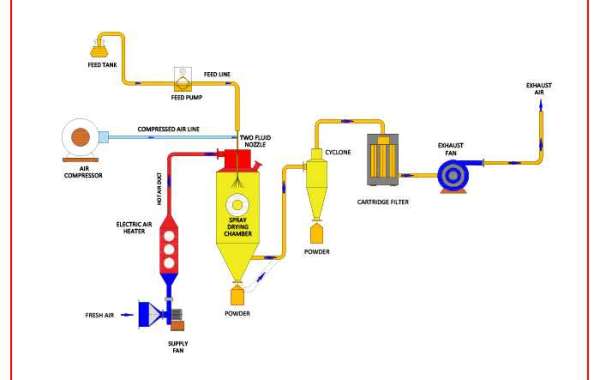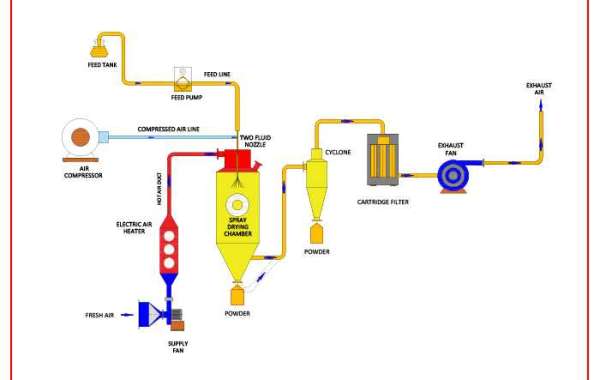Spray drying removes liquids' moisture and converts it to powder form without affecting their nutrient value or crucial chemical properties. It extends the shelf life of products without requiring refrigeration. When it comes to the spray drying process, this becomes an essential process in all the food and pharmaceutical industries. The hallmarks of a perfect Laboratory spray dryer are precise, quick processing, consistent particle size, and solubility.
Factors to consider when you are looking to purchase a Laboratory spray dryer
The feed's chemical properties
Spray drying can technically turn any mixture into a powder. On the other hand, the chemical properties of the feed affect the dryer system and the drying process. Consider the feed's property to ensure the safety of the equipment and particle consistency.
1. PH factor: Feeds with a high pH can corrode walls and cause equipment damage.
2. Flammability: Some feeds are flammable or explode quickly. In such cases, ensure adequate safety precautions during the spray drying process.
3. Hydroscopic properties: Products that attract water pose additional drying challenges.
4. Abrasive properties: Abrasive feed will damage the equipment at critical points as it passes through the spray dryer system, and it could cause damage to the piping system, pumps, and walls, among other things.
5. Thermoplastic properties: Thermoplastic materials, such as certain resins, have lower glass transition temperatures, making drying more difficult.
The solid content of the feed
The quantity of solids in the feed is one factor that significantly impacts product throughput. From the standpoint of lab spray dryer efficiency, knowing the actual percentage of substance in the feed is critical. For beginners, it informs us whether the effective evaporation of the material is possible. On the other hand, it will also exceed the dryer's evaporation capacity, which is not ideal. Secondly, a high percentage of solid content means less feed evaporation and an increased production rate.
Pressure and the atomiser system
The feed atomisation happens under pressure when you use nozzle atomisers. The chemical properties of the feed material and the desired droplet size influence the atomiser selection. The amount of force used in this process affects the size of the droplet. The smaller the droplet size of the final product, the higher the pressure.
Inlet Temperature
Inlet temperature generally refers to the drying gas temperature before reaching the drying chamber. The evaporation rate of the solvent increases as the inlet temperature rises.
However, raising the inlet temperature alone does not always result in the best final product.
On the other hand, a high inlet temperature can affect the surrounding air's wet-bulb temperature, resulting in thermal degradation of the final product. The calculations for maintaining the inlet temperature level depends on the properties of the food source. If you need further clarification, then Laboratory spray dryer suppliers help you.
The flow rate of drying gas
The gas flow rate is the amount of drying gas injected into the drying chamber per unit of time. The efficiency of the cyclone within the drying chamber increases when the gas flow rate is high. Yet, it minimises the air-droplet interaction, which increases particle movement. As a result, you must keep the gas flow rate high to ensure moisture evaporation and the subsequent separation procedure.
Outlet Temperature
The outlet temperature refers to the air temperature holding the dried particles. At the same time, it is essential to measure the temperature before particle deposition in the collector. However, this isn't the case in every situation. In the case of counter-current dryers, the outlet air may be cooler than the finished product.
Residence Time
Residence time refers to the amount of time feed material droplets spend inside the drying chamber. Indeed, this factor directly impacts the final product's quality. Furthermore, precisely measure and calculate the residence time to dry the liquid feed while retaining its chemical properties. The ideal residence time is a few seconds, with fine particles not staying in the chamber for more than 15 seconds.
Are you looking for reliable laboratory spray dryer manufacturers?
Spray Tech System can help you with all your related needs!
Many factors play a significant role in the effective spray drying process. Hence, starting from the feed properties to particle movement within the drying chamber, ensure precise measurement. Precision in the process requires a mix of technology, knowledge, and experience. We have several years of experience with drying processes in various industrial applications. This includes spray dryer design, manufacturing, and commissioning at customer sites, all of which meet global standards. We provide advanced simulation and analysis of the drying process using the latest technology to make your process more efficient and cost-effective. Additionally, we also have pilot plants for development and testing.








